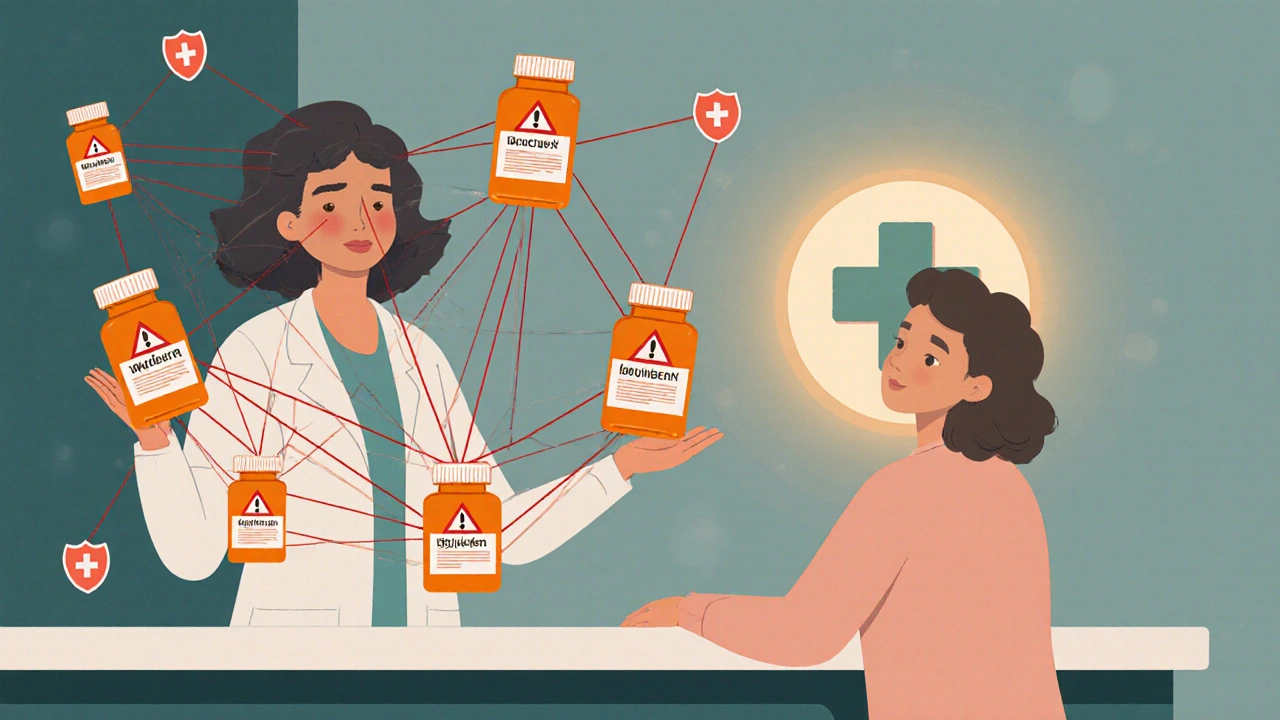One Pharmacy: What It Means for Your Medications and Health
When we talk about one pharmacy, a single trusted pharmacy that handles all your prescriptions and over-the-counter meds. Also known as single-pharmacy care, it’s not just a convenience—it’s a safety net. Most people jump between pharmacies because of price, location, or convenience. But that fragmentation is exactly what puts you at risk. When your blood pressure pills are filled at one store, your antibiotics at another, and your pain meds at a third, no one has the full picture. That’s how dangerous interactions slip through.
Using one pharmacy, a single trusted pharmacy that handles all your prescriptions and over-the-counter meds. Also known as single-pharmacy care, it’s not just a convenience—it’s a safety net. means your pharmacist sees everything you take. They can spot when your diabetes drug clashes with a new supplement. They’ll warn you if that new cough syrup could make your heart race when mixed with your beta-blocker. They remember your history—not just this month’s script, but last year’s, and the one before that. This isn’t guesswork. It’s how medication safety, the practice of preventing harm from drugs through proper tracking, timing, and communication. Also known as drug safety, it’s the foundation of responsible care. actually works. Studies show patients who stick with one pharmacy have 30% fewer adverse drug events. That’s not a small number. That’s someone avoiding a hospital trip because their pharmacist caught a conflict no doctor saw.
It’s not just about avoiding bad reactions. It’s about catching problems early. If you’re on a drug like warfarin or thyroid medication, small changes in how your body absorbs it can throw everything off. A single pharmacy tracks your refill patterns. They notice if you’re running out faster than usual—maybe because you’re skipping doses, or maybe because the generic switched and it’s not working right. They can flag that before you end up dizzy, fatigued, or worse. And when you need a travel letter for controlled meds, or help storing liquid antibiotics properly, your pharmacist already knows your history. No repeating your story. No confusion. Just help.
You don’t need to be on ten meds to benefit. Even if you take two or three, using one pharmacy, a single trusted pharmacy that handles all your prescriptions and over-the-counter meds. Also known as single-pharmacy care, it’s not just a convenience—it’s a safety net. gives you a real ally. Your pharmacist isn’t just filling scripts—they’re watching for signs you’re struggling, noticing when a new side effect shows up, and reminding you about timing rules, like keeping magnesium away from osteoporosis drugs. This is the kind of care you don’t get from an app or a website. It’s human, it’s local, and it’s built on trust.
Below, you’ll find real guides on how to track your meds, avoid dangerous mixes, store antibiotics right, and use logs to prevent overdose. These aren’t theory—they’re tools used by people who’ve been burned by fragmented care. And they all point back to the same thing: when you keep your meds in one place, you keep yourself safer.

Using One Pharmacy for Safety: How Centralizing Prescriptions Reduces Drug Interactions
Using one pharmacy for all your prescriptions reduces dangerous drug interactions, prevents duplicate medications, and gives you consistent support from a pharmacist who knows your full health history. It’s a simple step with major safety benefits.
October 31 2025